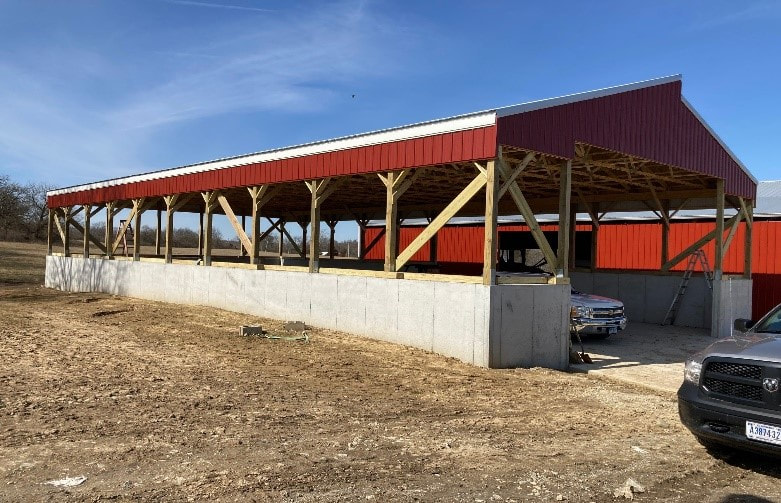|
A horse, on average, can weigh nearly 1,000 pounds and can defecate roughly 13 times a day. This roughly equates to about 50 pounds of wet manure a day – including urine. The bedding that is gathered in the animal waste, also contributes to the weight. The bedding can increase the total volume to 2-3 feet of waste per day. Per one ton of manure, the nutrients that can be found include nitrogen, phosphorus, and potassium – with bedding having the potential to also affect the nutrient reading. If not managed properly, manure runoff can cause pollution with the potential to negatively impact local waterbody sources.
Storage:
Keeping animal waste as dry as possible results in less waste that must be transported elsewhere. Consider a NRCS Conservation Practice for a waste storage facility which will help prevent runoff and is also helpful for winter storage, since Ohio does not allow manure spreading on frozen or snow-covered ground. For large facilities, cost-share options may be available. Composting: Composting utilizes an accelerated decomposition process that uses the organisms and bacteria found growing in the soil that helps break down manure. The process requires proper oxygen and moisture levels, as well as proper feedstock mixture, to ensure proper microbial activity. The composting piles must be turned to ensure proper aeration and the final product of composting is a crumbly and has a low odor and resembles topsoil. Contact a technician at Warren County Soil & Water Conservation District at (513) 695-1337 if you have questions. Also, consider the Ohio Livestock Manure Management Guide written by OSU Extension: https://agcrops.osu.edu/sites/agcrops/files/imce/fertility/bulletin_604.pdf
1 Comment
|
Details
Warren County SWCD Staff BlogA blog to keep you informed on all the latest news at Warren County SWCD and in the conservation world. Archives
May 2024
Categories
All
|
|
|
Contact:PHONE: (513) 695 - 1337
EMAIL: [email protected] HOURS: Monday - Friday 7:30am - 4:00pm (except holidays) Connect:Warren County Soil & Water Conservation District Copyright © 2016
Warren SWCD Privacy Notice. Emails are serviced by Constant Contact. Constant Contact's Privacy Notice. |

